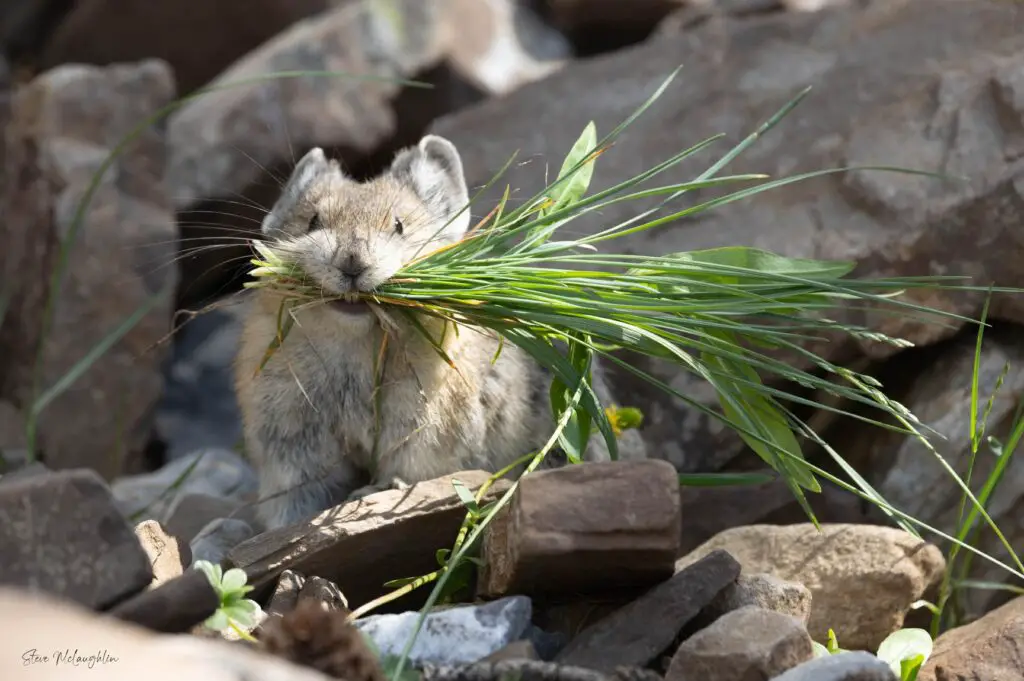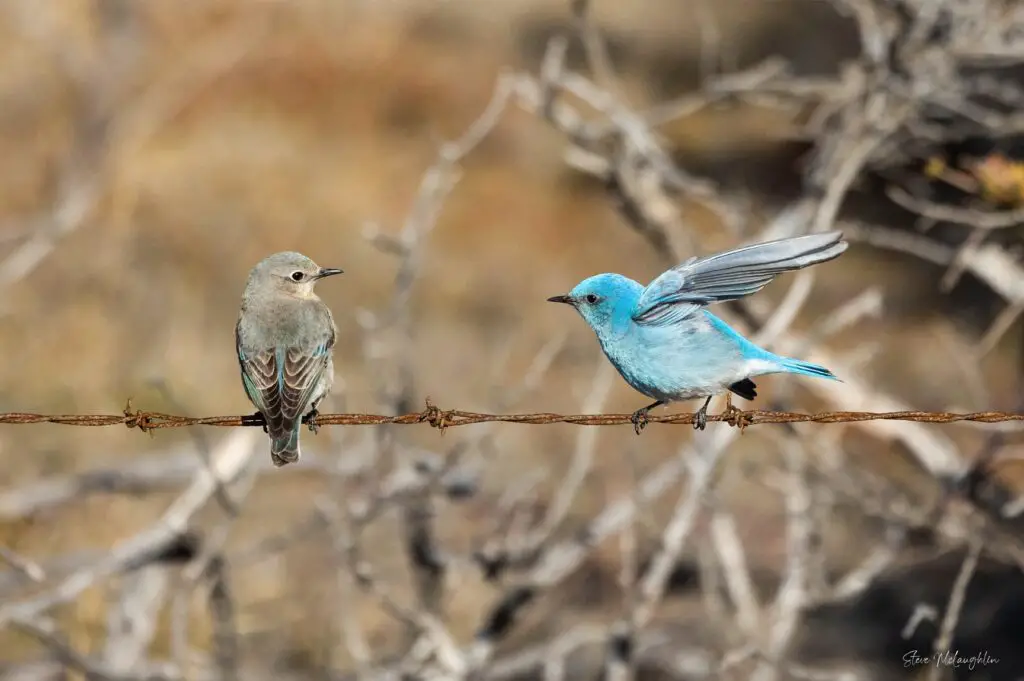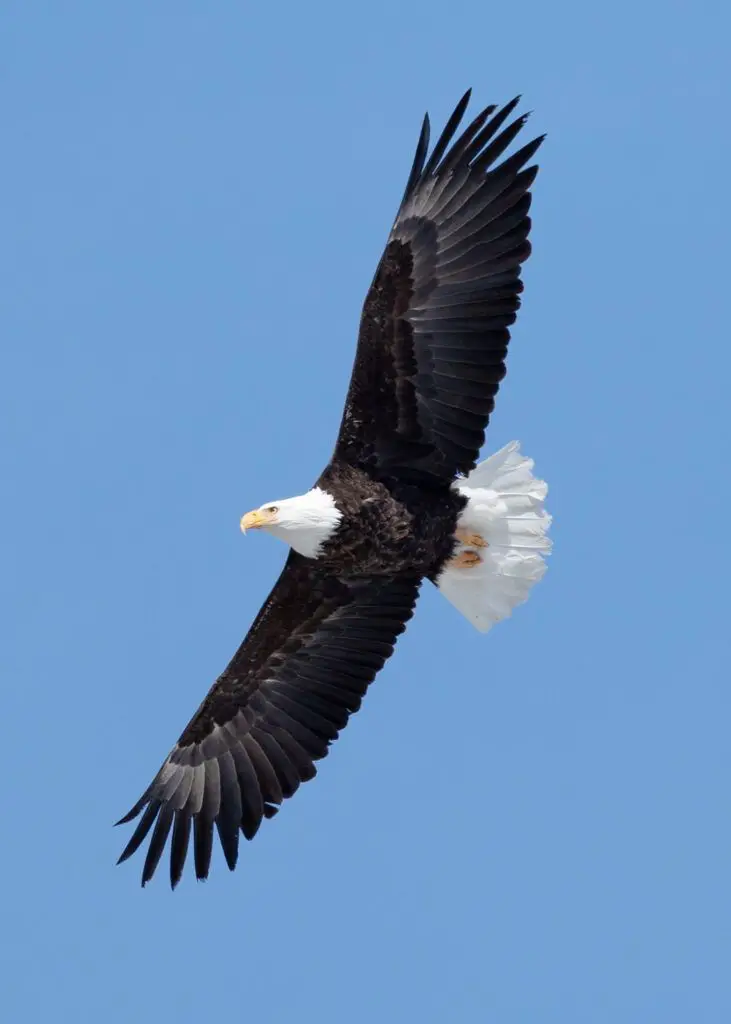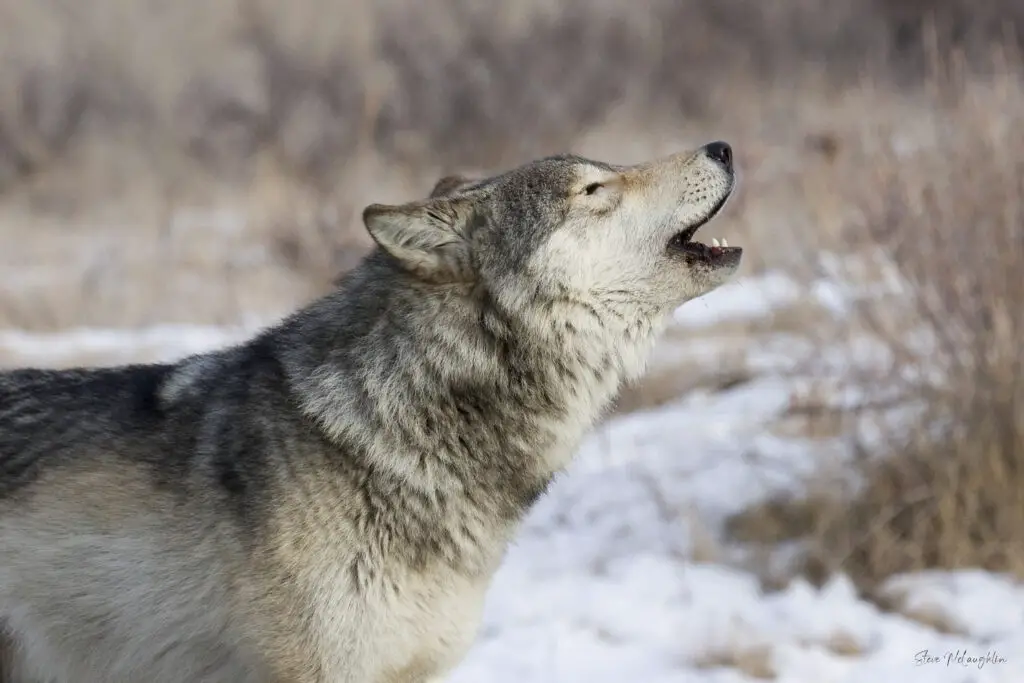Capturing wildlife in the middle of dynamic motion is the holy grail for many wildlife photographers.
It’s one thing to capture elk casually grazing in a meadow, or a grizzly bear munching on dandelions by the side of the road. But being able to capture birds in flight, or even animals at the peak of hunting their prey is on another level!
With the right preparation, gear and techniques, you can increase your chances of scoring some epic keepers. In this blog post, we share lots of tips for getting good action shots of animals.
Following these techniques will help you build your own portfolio of jaw-dropping wildlife action shots over time, and will keep your heart pumping every time you get out into the field!
Table of Contents
Camera Gear & Settings Needed
Here are some considerations that will allow you to capture good action shots when you pick out camera gear:
- Fast burst mode: You’ll want a camera that can take multiple shots in quick succession to increase your chances of catching the perfect moment. This is called the “FPS” or frames per second. Most modern DSLRs and mirrorless cameras have burst modes of at least 5-10 frames per second.
- Fast autofocus: The speed of the autofocus can be affected both by the camera body you choose and the lenses. When you research new gear, make sure to get opinions from other photographers who shoot wildlife. Portrait and landscape photographers may not need the fastest autofocus.
- High ISO performance: The ability to shoot at high ISO sensitivities, like ISO6400 or higher, allows faster shutter speeds in lower light. This helps to freeze the action and get more shots in focus. Newer cameras perform better in this area, letting you bump up the ISO without adding too much noise to the final images.
- Sturdy tripod or monopod: Using a support can steady your shots and allow slower shutter speeds if needed. A tripod works best but a monopod can also provide support while letting you easily reposition yourself.
- Memory cards with fast write speeds: You’ll need high performance memory cards to keep up with burst shooting. Look for memory cards with around 300 MB/s write speed, like SanDisk Extreme Pro. Because burst mode writes a lot of images to your memory card at once, you’ll probably also want a memory card with plenty of space – 256 GB or more.
- Camera settings for speed: Set your camera to continuous autofocus and shutter priority or manual mode for full control over the shutter speed. When animals are in motion, you’ll need over 1/1000s shutter speed to make sure they stay sharp. (Unless you’re trying to capture motion blur for creative effect.) Birds in flight can require 1/1500 or even 1/2000 shutter speed to appear sharp in the final image.
For specific gear recommendations, check out our Gear We Use page – we keep it the most up to date.
Understand Your Subjects
Researching the animal you’re trying to photograph ahead of time is a great idea. Different animals may display different and more interesting behavior at certain times of the year, like mating season, spending time with their young or preparing to hibernate.
Even better than research is spending lots of time observing them. Nothing beats building up an intuition for what the animals will do next, so that you can position yourself in the best spot to catch these behaviors on camera.

Make sure to always give the animals enough space and patience to express their natural behaviors without fear. Many species of animals are very skittish and will just spend most of their time monitoring the threat level if you get too close.
Using Burst Mode
It’s a good idea to turn the burst mode and autofocus of your camera on before you get out onto the field. Using burst mode, the camera captures multiple shots in quick succession – much faster than you could press the shutter button.

Here I captured a male mountain bluebird showing off his wings to a female, perched on a section of barbed wire fence.
While it’s not strictly necessary, burst mode can greatly increase your chances of getting a good shot. If you use it, it’s a good idea to use a software like Lightroom (or a free alternative, Darktable) to cull through the images later on your computer. This way you can easily delete any shots that are out of focus or poorly composed, while quickly finding the keepers.
Panning
Panning is a technique that can allow you to capture fast animals running or birds in flight. Simply follow the animal’s movements with your camera, doing your best to keep them around the middle of the frame, while taking a series of shots in burst mode.
Using this method, you’re bound to get one or more shots where the animal is at the peak of their stride, or with the wings outstretched.
Using a tripod with a gimbal head can help a lot, as it lets you move the camera smoothly along the animal’s path while saving your arms and wrists the trouble of trying to keep the camera straight.

Don’t be afraid to zoom out slightly to make sure you capture the entire bird in the frame.
Pre-Focusing
Another technique for capturing action shots is to pre-focus your camera where you think the action is about to happen, rather than trying to follow the animal’s movement. This is especially useful for small, fast moving animals like birds.
If you can focus the camera on the branch or rock where the bird is about to land, you will capture the bird itself in focus. Similarly, if you can manage to intuit the spot where the predator will catch their prey, you will capture the decisive moment.
This is one technique that definitely requires a lot of practice. It might be hard at first, but you’ll improve at it over time.
Be Patient
The longer you’re willing to sit and observe your subjects, the more comfortable they’ll get with you and the more natural and interesting behaviors they’ll showcase for you.

I believe that these highly perceptive animals will only give you a glance at them if they are truly comfortable.
Picking a good location, then waiting and watching, is a great technique that can allow you to observe animals over the course of a morning or afternoon. Extended viewing periods like this can really increase the chances that you’ll see some exciting action go down!
For more photography inspiration, check our wildlife photography gallery! We photograph in the Canadian Rockies so lots of wolves, bears, pikas, elk and more.
Capturing the Decisive Moment
We hope these tips helped you capture your next action shot! While wildlife photography always involves elements outside of our control, by thoroughly getting to know your subjects’ behaviors, you can place yourself in optimal positions to photograph the perfect moment.
With practice and patience, you’ll improve at anticipating an animal’s next move and having your camera primed to catch those priceless split seconds.
Through diligent study, careful planning and quick reflexes and instincts in the field, any wildlife photographers can return from their adventures with awe-inspiring images of animals! See you out there in the field!
